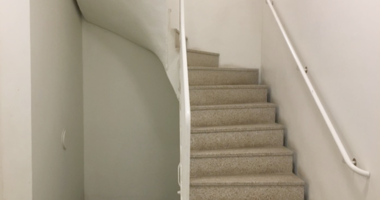Imaging the social

From image to presence
The original intention of the artistic research project "Imaging the social" was to examine and develop participatory performance approaches in terms of their mediating "3 medium": The "aesthetic thing" that, according to Claire Bishop, stands between participants and viewers in so-called participatory projects. However, this artistic research was shaped more than expected by the circumstances in which it took place: by the Covid pandemic and the institutional conditions at the location where it happened. The question of aesthetics and participation shifted. How can artistic activities create a space where people who do not know each other or about each other can come together? What is the performance that makes such a place? What role plays the presence of the "performers"?
"To anticipate, here is my experience: waiting is the event, and it entails other events. Without wait-ing, nothing would happen. Everything that came after the waiting was due to the waiting. That is what this report is about."
from "How to welcome people" - a site fiction about the artistic research
The research happens in Tårnby, a city on Amager next to Copenhagen hosting the Copenhagen airport. Tårnby is a place with a unique sound of a province with a spice of internationality. It is also the place Andreas Liebmann lives with his family.
In search of proper methods for interaction, Andreas Liebmann explored practices of invitation, inclusion, and presence. With the additional support of the local municipality, Statens Kunstfond and Creative Europe, he initiated the performance nights "Self Made Capital" in a former Bank Nordic building, created the "Tårnby Park Performance Festival" in Tårnbyparken with workshops, kids contributions, free cake, international performances, new collaborations of local and international artists and the involvement of neighbours, and he created the "House warming weeks" with consisted in "practices of presence": Free coffee, embroidery, workshops, open hours of boredom, residencies, solo cello concerts, and site-specific exploration. As a side effect of the work, a new institution was born: The "Tårnby Park Studio", with a profile of experimentation on the border of performance artwork and social outreach. One of its goals also is to network with other artist-run performance art institutions and create a dialogue of mutual support and solidarity.
Currently, Andreas Liebmann is writing on "How to welcome people - a site fiction" as a reflection text.
"Here we are talking about Zaid. Zaid lives in Tårnbyhuse. He is Egyptian and was married to a Danish woman he met online. They have four children. Now they are separated, the Danish courts have all kinds of objections to his visitation rights with the children, and he has to fill out forms all the time. He helps Andreas clean, talk, sew, which he masters like no other. Andreas wants to help him too and says "yes" when Zaid asks if he can help him with Danish paperwork. Andreas knows how it feels not to understand Danish."
from "How to welcome people" - a site fiction about the artistic research



Swiss performance artist, based in Copenhagen. Currently artistic driver of the site- and municipality-specific place "Tårnby Park Studio", a place for artistic experimentation in close contact with the social context. There he creates festivals, cooperations with local and international artists, and a space to reflect on the entanglement of artistic activities with the society.
With his cross-European performance collective GASTSTUBE°, he develops process-based "public moments", platforms for shared learning, poetic workshopping. In their work, GASTSTUBE° rethink modes of production, the idea of project vs. long-term perspectives, collective practices, solidarity, and the use of material and human resources for artistic work.
For his international collaborations, Liebmann tries distance-specific rehearsing and performing methods. As author and director, he is currently creating a play for Bürgerbühne Dresden, where he does half of the directing work online. Since 2015 he has been a teacher for idea-based and conceptual direction at DASPA Copenhagen. His artistic research deals with questions of public space in connection with performance practices.
Consultants
- Morten Goll, Leader of Trampolinhuset
- Biljana Tanurovska, Leader of Lokomotiva Skopje
Collaborators
- Simone Bartolin, Set Designer
- Sophie Grodin, Performance Artist
- ...More to be updated
Involved artist 2020
- Jon Bonnici
- Agnes Grélinger
- Andreas Haglund
- Kevin Eagle Oliver
- Gareth Davies
- Birgitte Skands
- ...More to be updated
Involved Artists 2021
- Sara Hamming
- Delia Keller
- FUKK Copenhagen
- Karin Bergman
- Sonja Pregrad
- ...More to be updated
Project period: 2019-2021





